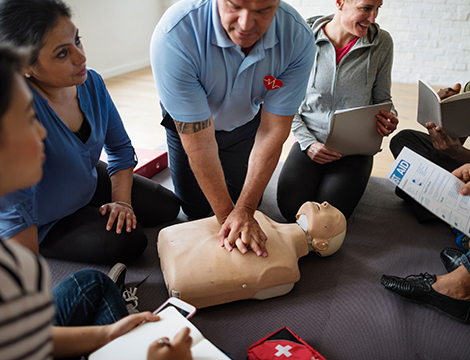We are starting this article by quoting the now very famous speech of MP Laming in the Australian Parliament: I rise after a nationwide investigation into the performance of ASQA … This is not just a domestic issue; this is about brand Australia … This aggressive and adversarial conduct is an enormous concern”.
The full speech available here:
https://www.aph.gov.au/Parliamentary_Business/Hansard/Hansard_Display?bid=chamber/hansardr/c53753a5-4ecd-4871-a577-d7549f791ed2/&sid=0253
It is of great concern when the chair of a federal parliamentary committee launches an extraordinary attack on the Australian Skills Quality Authority (ASQA), claiming “its audit activity is being misused to damage and, ultimately, wipe out some private training colleges and that the regulatory body is not currently focused on outcomes but rather administrative processes and although these are an extremely important part of any RTO’s system, the idea of what the VET sector is all about quality training focusing on the student, leaves people asking the question, what happened?
Unrealistic expectations of the VET regulator
This is one of the most common issues, we have been told by industry representatives, training providers and other stakeholders. Even the Small Business and Family Enterprise Ombudsman (ASBFEO) has discussed this in one of the recent events organised by Independent Tertiary Education Council Australia (ITECA) “From my perspective that’s not good enough”.
Courtesy: ASBFEO.
Auditors unreasonable demands and expectations at the time of the audit
Professional judgement is a complex issue in audit and its process is influenced by a number of critical factors. However, auditors must avoid unprofessional and unethical conduct during the audits.
Auditors must conduct audits to review the systems and processes according to a set agenda and framework. One of the most common feedback from the private sector is unprofessional and unethical behaviour from the auditors. The manner in which some of these officers interact with training organisation representatives has been explained as simply “bullying or harassment”. One of the RTO representatives commented on ASQA auditors demands and expectations as:
“The auditor was putting unnecessary demands and pressure on me, asking me to print everything in hard copy when it was given to her as a softcopy on a USB. She kept on pressuring that she wants to see the hard-copy documents in 1 to 2 minutes until I had to step up and say, “It takes me 2-3 minutes for me to go to my desk from the board room and then another 2-3 minute to print the document, how can I provide you with the requested copies in 1-2 minutes”
Chasing an ever-changing goal post
Training organisations are currently chasing an ever-changing goal post.
The State, Territory and Commonwealth Governments have collectively made 465 major reforms in the VET sector in the past 21 years. More information is available here https://www.voced.edu.au/vet-knowledge-bank-timeline-australian-vet-policy-initiatives
This means one major reform every fortnight, every year, for more than two decades. This figure does not include changes made in the International Education Sector.
How this is affecting Australian businesses providing training and education to students? How many more reforms or changes should the VET sector expect? Every time a regulatory framework changes, there is talk about reducing the red tape and getting a better, quality, effective training system in place.
Are these changes causing more reputation damage to the VET brand? Who has made these policy decisions and how many of the decision makers have actually been employed or worked in the vocational education and training sector? How can organisations deliver quality if they do not get the required time to effectively implement and consolidate?
Approving organisations only to close them down later
A number of training organisations that were recently approved by Australian Skills Quality Authority are currently going through audits. The audits are called when they are applying to add courses to their scope or are post-initial audits. The problem is not that they are going through audits within the 12 month period, the concern is that the majority of these are being shut down by ASQA on the use of assessment materials, marketing practices, training and assessment strategies etc and other documents that ASQA reviewed and approved 12 months earlier or less.
Where is the consistency? What kind of regulatory body does this?
“We have never cancelled or suspended an RTO for administrivia” says Mark Paterson AO, Chief Commissioner of ASQA. How does Mark Paterson reconcile this with overturning 50% of the cancellation decisions when he reviews them (generally within 6 months of the original decision).
A solicitor has openly in a public forum questioned the practice:
“The overwhelming number of adverse decisions following audits are currently being signed by the Chief Commissioner or 2 Commissioners thereby depriving RTOs from applying for further reconsideration/reassessment internally. This might explain, in part, why there has been such a drastic increase in cancellation decisions based on what many RTOs (and their advisers) consider to be less than serious non-compliances.
The interesting question is why almost all adverse decisions (that we are seeing at least) are being signed by the Chief Commissioner or 2 Commissioners directly following an audit. There could be a reasonable explanation for this. However, the effect of this approach is that fewer RTOs are able to achieve compliance through internal reassessments/reconsiderations and therefore their registrations are cancelled upon signature of the Chief Commissioner or 2 Commissioners.
Engagement of the auditors
Unfortunately, the regulatory body has moved away from recruiting officers that have a background in the education sector or even relevant industry experience to be able to effectively audit training organisations.
Questions have to be asked with regards to how auditors are selected and engaged by ASQA.
ASQA hire Lead Regulatory Officers to lead and supervise audit teams; make recommendations about RTOs compliance; make recommendations for Commissioners. Successful applicants are not required to hold legislated mandatory qualifications.
What process does ASQA use to put regulatory staff through their qualifications? According to AQF guidelines, Certificate IV and Diploma require a minimum of 1.5 years/1800 hours, up to 4 years in total/4800 hours to complete. So, does that mean that ASQA staff receive 4 years of training before they are in a position to recommend the shutting down of Australian companies? Who issues the qualifications?
When Mark Paterson AO commented on the first-ever strategic review as Chief Commissioner “a review of issues relating to unduly short training” did anyone review ASQA’s own recruitment practices or compliance with the Australian Qualifications Framework (AQF) and other relevant guidelines?
Question regarding independence of ASQA’s Governance, Policy and Quality team
How many complaints against ASQA, its conduct and officers have been lodged since 2011? How many decisions were investigated and what actions were taken against the officers who conducted malpractice and were in conflict of interest situations?
There seems to be a significant disconnect between the lived experience of training providers and the messages that come out of ASQA and its auditors and officers. Where is the breakdown occurring? Who audits the auditors and officers?
Outcomes of the expert reports
Professor Valerie Braithwaite’s review of Vocational Education and Training Sector
The National Vocational Education and Training Regulator Act (the NVETR Act) of 2011 was requested to be reviewed by Canberra-based academic Valerie Braithwaite in 2017. This act “underpins the operations and activities of the Australian Skills Quality Authority (ASQA).” The report was submitted on January 2018 with 23 recommendations to the Government.
It is accessible here: All eyes on quality: Review of the National Vocational Education and Training Regulator Act 2011 report https://docs.education.gov.au/node/50866
The following items were identified and reported as part of the review process:
Concerns about the compliance burden on RTOs, the inconsistency of audits and auditors, the difficulty in making sense of ASQA’s regulatory approach, and a disconnect from what RTOs considered important for regulation of the sector. In short, ASQA’s regulatory task is made more difficult and the sector’s anxieties are increased by a lack of supportive regulatory conversations.
“ASQA [has an opportunity] to sophisticate its use of strengths-based regulation, in particular praise for RTOs that have done things well, while also improving the use of a more iterative and educational approach with those at risk, when it is within the capacity of the RTO to mitigate those risks.”
“Deepening VET professionalisation and the commitment of the teaching workforce to continuous improvement in the quality of teaching and learning are … imperative.”
“the legislative framework be revised to require an RTO to assess the quality of its teaching workforce and develop teacher quality improvement actions, which must be submitted to ASQA annually as a part of the Quality Indicator Annual Summary report.”
Reference:
https://docs.education.gov.au/system/files/doc/other/all_eyes_on_quality_-_review_of_the_nvetr_act_2011_report.pdf
The Strengthening Skills : review conducted by Steven Joyce, former New Zealand Minister for Tertiary Education, Skills and EmploymentOn
28 November 2018, the Australian Government announced an independent review of the VET sector.
-
The Commonwealth and the States and Territories to confirm their support for the Australian Skills Quality Authority as the single national regulator to provide consistent quality assurance to the vocational education sector.
-
There is a lack of trust in the sector, mainly owing to the reputational issues but also over the quality of private operators.
-
Mr Joyce recommended benchmark hours be set by ASQA, initially just for “high-risk” qualifications but eventually for all courses.
Reference:
https://www.pmc.gov.au/sites/default/files/publications/strengthening-skills-independent-review-australia-vets_1.pdf
The confidence of training providers with the Australian Skills Quality Authority (ASQA)
What kind of confidence can industry have in the practices of a regulatory body whose affirmed decision ratio in the Administrative Appeals Tribunal is one in twenty-two cases? Out of 446 applications to tribunals or courts seeking review of ASQA decisions between 1 July 2011 and 31 March 2019 are as follows:
-
Resolved between the applicant and ASQA = 52.0%
-
Dismissed by the Court or Tribunal = 11.4%
-
ASQA’s decision affirmed = 4.5%
-
ASQA’s decisions set aside = 1.8%
What is the role of the regulatory body?
If we look into the Section 2A Objects of the Act:
The objects of this Act are:
(a) to provide for national consistency in the regulation of vocational education and training (VET); and
(b) to regulate VET using:
(i) a standards‑based quality framework; and
(ii) risk assessments, where appropriate; and
(c) to protect and enhance:
(i) quality, flexibility and innovation in VET; and
(ii) Australia’s reputation for VET nationally and internationally; and
(d) to provide a regulatory framework that encourages and promotes a VET system that is appropriate to meet Australia’s social and economic needs for a highly educated and skilled population; and
(e) to protect students undertaking, or proposing to undertake, Australian VET by ensuring the provision of quality VET; and
(f) to facilitate access to accurate information relating to the quality of VET.
A common misconception in the industry is that ASQA exists to protect and promote quality in the sector, however, the act clearly outlines, it exists to protect and enhance quality, it exists to provide national consistency in its decisions, it exists to encourage and promote a VET system that provides quality, flexibility and innovation.
Is this really happening?
ASQA has obligations to be consistent irrespective of whether they are regulating a public education provider or a private education provider. The legislation does not differentiate between the two. Australians need confidence that the regulation of Vocational Education and Training sector is effective, evidence-based, comprehensive, consistent and coherent.
Overall, as industry representatives and stakeholders we are all interested in getting the following information from the VET regulatory body:
Please note: This is not a comprehensive list, many more could be added.
Support and information for training organisations
-
What support is ASQA providing to training organisations? It is clearly stated in email templates and verbally, that ASQA is “not a consultancy firm but a regulator”. So, let’s discuss what the role of a regulator in the education and training sector is. Is it to provide the required assistance for businesses to be successful, student-focused and quality education and training providers?
-
Who audits ASQA’s website? When is the information published reviewed? It is full of contradictions, errors and conflicting information. Who ensures the content and information ASQA has on its website aligns with the regulatory standards and legislative instruments. Let’s look at one critical example:
Validation requirements for training organisations explained in ASQA’s frequently asked questions:
How many units per qualification should be validated?
At least two units from each qualification must be validated; however, your RTO may choose to validate more if validation of the two units identifies risks or a potential harm to learners who may not have met the required assessment outcomes, inconsistent assessment judgements have been made by assessors or assessment has not been conducted in accordance with the Principles of Assessment or the Rules of Evidence.
WIll this meet legislative requirements? Let’s now look into what is the requirement under the standards.
Clause 1.10
“each training product is validated at least once every five years, with at least 50 percent of products validated within the first three years of each five year cycle, taking into account the relative risks of all of the training products on the RTO’s scope of registration, including those risks identified by the VET regulator.”
So, how will 50% of training products be validated in three years if a qualification has for e.g. 22 units and you validate 2 units based upon the advice of the VET Regulatory Body?
ASQA Audits
-
What kind of rigour is used to review the documents and information provided to ASQA during the audits? Who checks the documents during the desk audit? Are these auditor or ASQA officers making the decisions? What checklists or criteria do they have to check the information?
-
There was a case where ASQA officers could not read the name of the RTO staff from their own audit report and internal documents and refused an RTO application. How this is possible? What actions have been taken to ensure this doesn’t happen again?
-
How can ASQA review the documents of an organisation, find them compliant in writing, approve them for providing training and then six months later, after the initial audit, shut them down or use sanctions to disadvantage the RTO? How can that be possible? If ASQA made a mistake at initial audit then who should be held responsible? If ASQA made mistakes at following audits then where is the consistency in the system?
Rectifications and reconsideration
-
Why is ASQA is relying on AAT to solve the problems using valuable tax payer money? Take into consideration the number of decisions that have been resolved between the training organisation and ASQA, set aside or affirmed each year?
-
Why have rectifications and reconsiderations no longer been allowed? Especially when there are a number of conciliation and reconciliation meetings that happen during the Administrative Appeals Tribunal process. Is this process put in place to drain training organisations financially and emotionally?
Conflict of Interest
-
How can an auditor, who is representing a Government body, not a private regulatory body, be allowed to work in an organisation they have been auditing after only six month gap?
-
How can consultants be allowed to become auditors and then again go back to work as consultants in the sector and then again be engaged by ASQA?
-
If there is a “fit and proper person requirements” for training representatives and high managerial agents, what requirements are applicable for ASQA officers and auditors? A number of these officers have been part of training organisations, either as consultants or employees, that have been closed down and had critical non-compliances and unfavorable compliance outcomes.
-
Why are government officers allowed to provide consultancy services to RTOs? WHen and where do we draw the line for a conflict of interest?
ASQA Audit Practices
-
Why does ASQA not allow its audits to be recorded? If audits are conducted in a compliant professional manner then what is the problem? We strongly encourage all audits be allowed to be recorded.
-
Why are comments outside of the scope of audit allowed to be made during audits?
-
How is ASQA ensuring procedural fairness and transparency in its decisions?
-
What risk management approach is ASQA using? After eight years, it appears that the core issues of the VET training system have still not been solved.
-
Why there is no consistency, parameters and timelines in terms of when training representatives are audited and provided with audit reports?
-
Are ASQA audit practices auditor-centred, rather than system-centred? Are auditors auditing outside the regulatory framework and guidelines?
Audit Reporting
-
Why are all audit reports not available on ASQA’s website?
Privacy and confidentiality
-
Why is ASQA allowed to circulate incorrect information and documents about consultants and RTO staff in the sector is direct conflict with privacy and confidentiality laws?
















